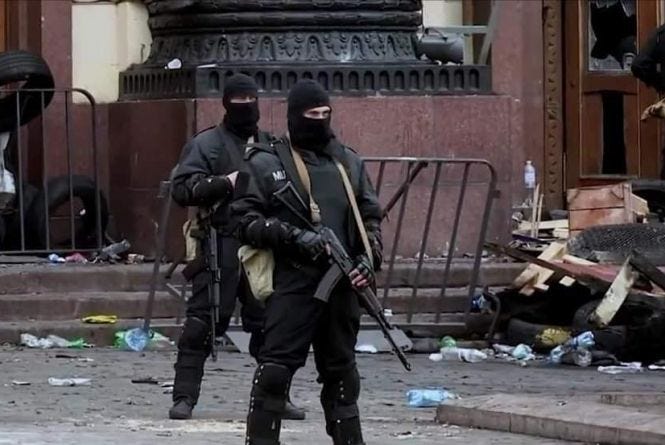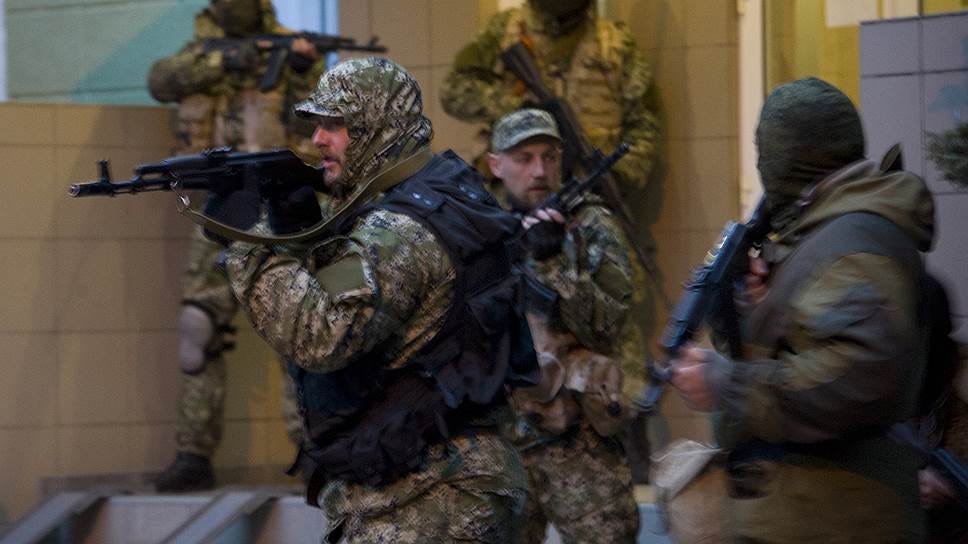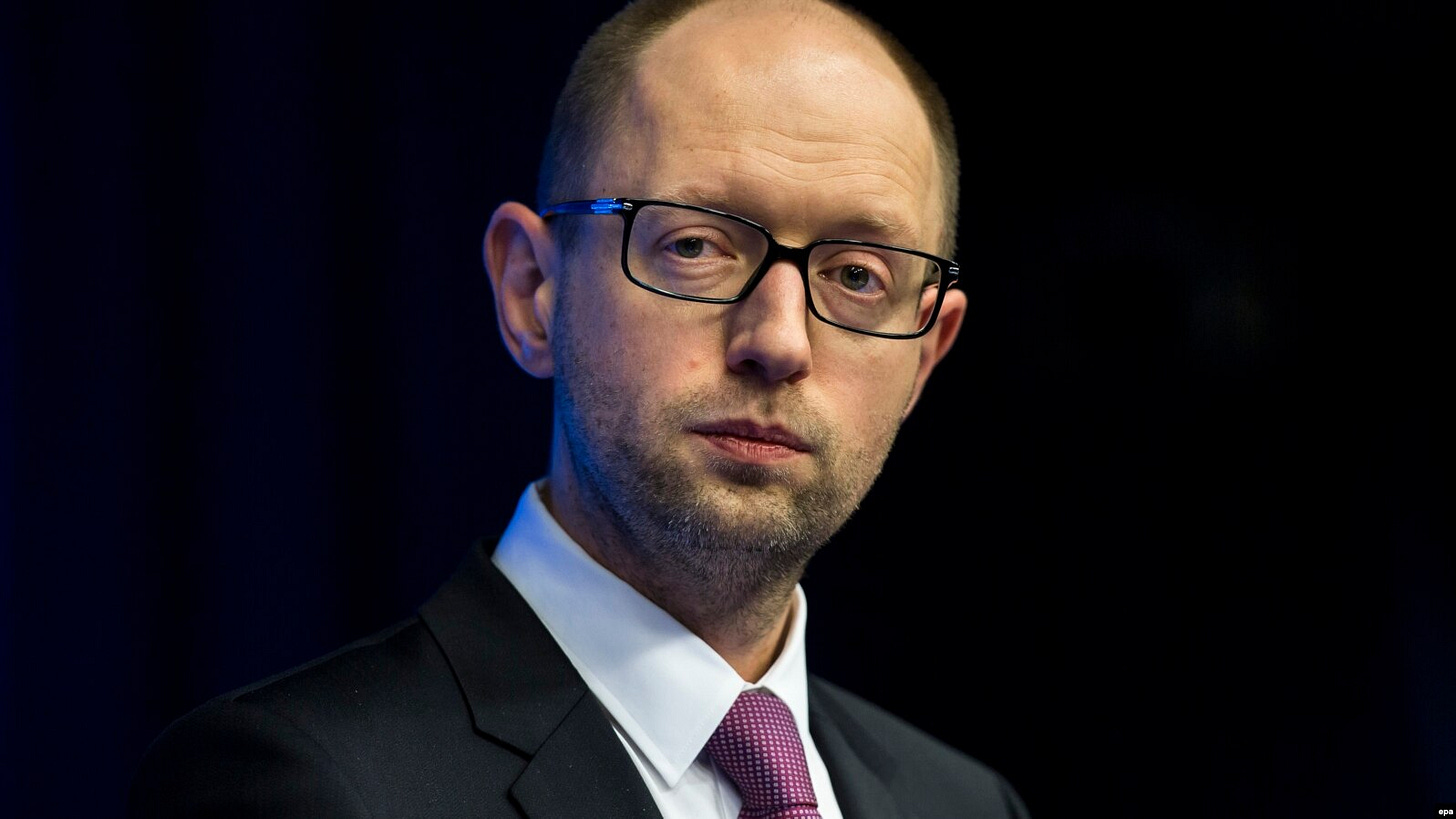The Ukraine Peace Deal That Almost Was
How the post-Maidan government tried to stop the fighting before it began
On the April 11th, 2014 the “Kyiv Paratroopers” landed on the “Eastern Front” - back then these words were used metaphorically: so was called the Prime Minister Arsenii Yatseniuk’s departure for Dnipro and Donetsk to smooth things over with local oligarchs. Donetsk was the first and most important stop: there, Yatseniuk met everyone from Oblast heads down to district level politicians. Also present were “representatives of business,” including the Arch-Oligarch of Donbas, Rinat Akhmetov.
Yatseniuk’s visit was a part of the post-Maidan government’s effort to lower tensions in the East of the country, especially in the power centers of Kharkiv, Donetsk and Odesa. There, major pro-Russian protests would grow into carefully organized riots, as local Russian nationalist groups would be paid by the Kremlin to act as a battering ram. The original plan was for all these groups to capture administrative buildings throughout the country on March 1st, gather the local politicians, and force them to request protection from the “Banderites” in the form of Russian troops. This closely resembled the takeover of Crimea, where the Russian special forces, aided by local paramilitary groups, captured the government buildings on February 27th, just days prior.

This approach to taking over the Ukrainian south-east proved to be… less than effective. Government buildings were captured in most major eastern cities on March 1st, yes, but after that there was no coordination between the groups or the Russian team paying them (headed by Putin’s top advisor Glazyov). Leaked phone calls reveal a chaotic situation in Glazyov’s office at that time; in Zaporizhzhia, the “cossacks” Glazyov paid simply did not even appear. By the evening, crowds dissipated and left most buildings.
But Moscow viewed the failure of March 1st as only a temporary setback, while the local pro-Russian groups - the Oplot martial club in Kharkiv, whose leader held deep Russian ultranationalist beliefs; the Donbas People’s Militia headed by the “People’s Governor” of Donetsk Oblast, Pavel Gubarev; the Luhansk Guard and the Odesa Druzhyna - viewed all this as an important lesson. The Glazyov team continued coordinating and organizing pro-Russian riots throughout March. There were also organic pro-Russian protests, of course - many easterners feared the new government, told by pro-Russian media to expect literal buses of Right Sector militants taking over their cities. And of course, these protests happened with the approval or outright support of local arch-Oligarchs, such as former Governor Hennadii Kernes in Kharkiv or the aforementioned Rinat Akhmetov in Donetsk. Eastern elites intended to use the threat of separatism as a means to extract concessions from Kyiv, just as they did after the Orange Revolution a decade prior.
In most protests, the demands were three-fold:
1: Referendums on joining the Russian Federation to be organized on the Oblast level;
2: Official legal protection of the Russian language and the rights to using it;
3: Most importantly - “federalization” and increased autonomy from Kyiv. This in practice meant the re-routing of control over investments and money flows in these regions, handing local oligarchic clans yet more power.
On February 27th, as he became Prime Minister, the politician Arsenii Yatseniuk told journalists that he was a political “kamikaze.” The government cobbled together after President Yanukovych and much of his associates fled the country was shaky and swamped by trouble - Russian troops were blatantly taking over Crimea and attempting to create conditions for such takeovers in the rest of the country, while nationalist groups like the Right Sector put public pressure on the government to act decisively in Ukraine’s interests. Anyone heading a government in such a position, Yatseniuk explained, would stand no chance of winning in the Presidential elections set for May.
By mid-March, Crimea was practically lost while the situation in the East reached boiling point, with a fatal stabbing of a pro-Ukrainian protestor by Russian rioters in Donetsk and an outright firefight between Russian and Ukrainian nationalist groups in Kharkiv, which in turn led to the death of two of the Russian militants, one of them a local policeman. Their funerals were funded and attended by the arch-oligarch of Kharkiv, Henadii Kernes.
In the meantime, Kyiv began a policy of total concession to the eastern demands; on the 18th, Yatseniuk published a divisive statement aimed at the eastern Ukrainians: it declared that the 2012 language law, a hallmark of the Yanukovych administration that all but put the Russian language on the same level as Ukrainian, would remain intact, and there was no intention to change the de-facto official status of the Russian language in the eastern Oblasts. Yatseniuk went on to say that “my wife Terezia predominantly speaks Russian. And she, like the millions of Russian-speaking Ukrainians, had no need of protection by the Kremlin.” Yatseniuk also declared that Ukraine would not be pursuing NATO membership in the near future, and the association agreement with the European Union was to be reviewed and modified to accomodate the east’s economic interests. This seemed to somewhat work. The second half of March saw relative calm. The game that eastern oligarchs were playing was a dangerous one, and nobody intended for the situation to actually escalate, especially as Kyiv was already in the midst of giving in.
This “ceasefire” between Kyiv and the East was shattered when the Kremlin organized a repeat of the March 1st riots. On April 6th, Oblast Administration buildings were captured in Donetsk and Kharkiv by aforementioned local Russian ultranationalists, who this time barricaded themselves inside the buildings. The headquarters of the Luhansk Oblast department of Ukraine’s security service, the SBU, was also captured along with its large cache of firearms. The following day, “People’s Republics” were declared in Kharkiv and Donetsk.
The eastern oligarchs then finally seemed to realize that their little game was rapidly spiraling out of control. In Kharkiv, Kernes publicly condemned the rioters and adopted a pro-Ukrainian position. This was what allowed Kyiv to send in the “Jaguar” special police unit to break up the rioters in the Kharkiv Oblast Administration building on April 8th. Such was the end for Russian ultranationalist ambitions in Kharkiv, but tense standoffs in Donetsk and Luhansk continued to escalate. Donetsk’s SBU building was also captured. There was zero pushback by law enforcement, and there could not be any without approval from Rinat Akhmetov. Interior Minister Arsen Avakov declared ultimatums to the militants to lay down their arms. However, when the ultimatums expired Yatseniuk declared there would not be any forcible response.

And so we come to 11th of April: tense standoffs ensue in Donetsk and Luhansk while Yatseniuk and his government arrive to Donetsk to gain the support and approval of local elites. The proposal that they bring to the table is radical in its appeasement - it included most of the separatist demands, including official status for the Russian language, referendums, and delegation of power from Kyiv to Oblast levels. This seemed to work: during a press conference, Akhmetov commented that he is “categorically against capturing buildings” and called on the militants to engage in the dialogue. It seemed that the situation in Donetsk and Luhansk was on the path to stabilization.
But by then, it was too late. The local elites no longer held the power they believed they did, and the very next day, the 12th of April, a group of well-armed Russian ultranationalists under the FSB Colonel Igor Girkin crossed the border into Ukraine and captured the critical transport hub in Sloviansk. An “Anti-Terrorist Operation (ATO)” was declared in the city’s vicinity, just as it was in Kharkiv before the pro-Russian rioters were arrested. Girkin’s group, however, was something entirely different. On the morning of the 13th, the gathering law enforcement and military forces were ambushed by Girkin’s militants. The firefight led to the death of SBU Captain Hennadii Bilichenko, and the militants only retreated when, against orders not to open fire, company commander Sukharevskyi - at the moment head of Ukrainian army’s drone branch - told his BTR gunner to open up, saving the lives of half the SBU leadership. This was amidst a new wave of takeovers, now in smaller towns, and unlike before, focused on capturing police stations and securing weapons caches. For Kyiv it finally sank in: like it or not, the country was now de-facto at war.

Girkin later reminisced that without his group’s actions, the pro-Russian protests in Donetsk and Luhansk would likely have dissipated or been broken up. He proudly admitted that it was his hand that pulled the trigger.
Thank you for reading! Casus Belli is a project to shine the light on the first years of Russia’s invasion to an international English-speaking audience, for whom the events of 2014 remain largely a murky blind spot. This is the only such project that I know of. If you wish to support my efforts at Casus Belli, please consider sharing this article, subscribing (only for free, no paywalls) and donating on the project’s Buy Me A Coffee page.









I see a lot of the same things like the Texas republic filibusters going on here. We should have confronted then but it would have been "messy".